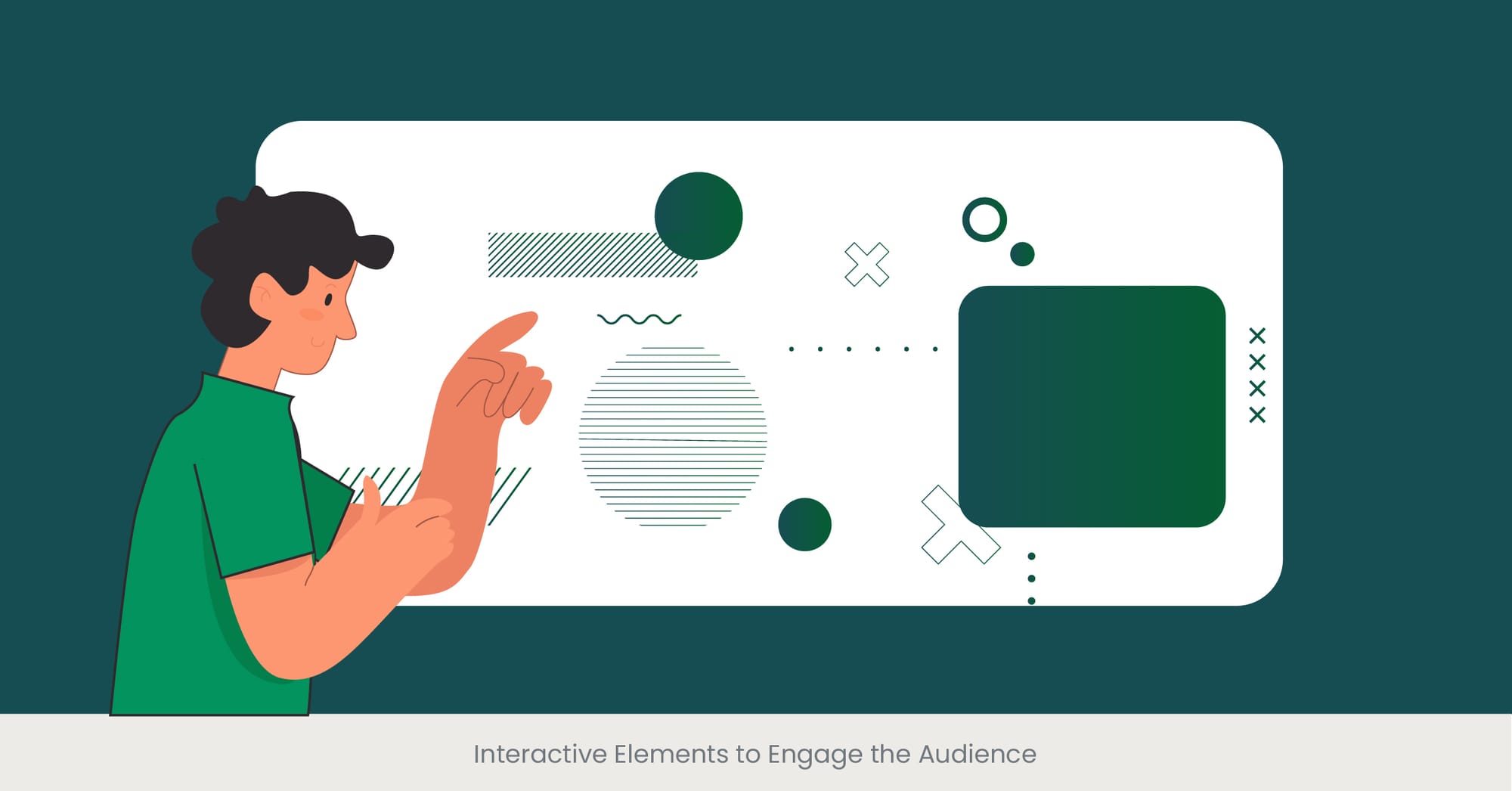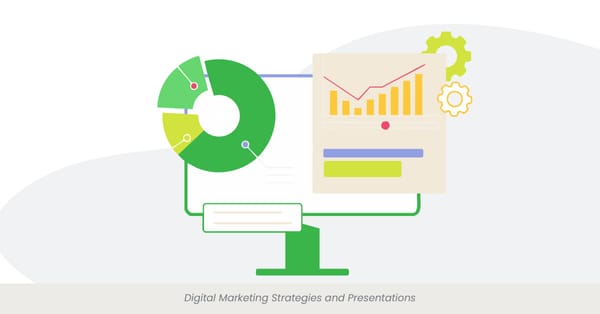
The Elements of a Persuasive Sales Pitch Deck

Introduction and Overview
A persuasive sales pitch deck is the cornerstone of any successful sales presentation. It serves as a visual narrative that supports your verbal pitch, enhancing the persuasive impact on your audience. The essence of a compelling sales pitch deck lies in its ability to succinctly convey the value proposition, highlight the benefits of the product or service, and address the specific needs and challenges of the prospective client. When designing custom sales presentations for CXOs, the strategic structuring of sales pitch slides, incorporating elements like high-quality images, clear data points, and concise bullet points, plays a critical role in capturing and maintaining the audience's attention from the start to the very end of the presentation.
Background and Key Components
The concept of the sales pitch deck has evolved significantly over time, transitioning from simple product overviews to sophisticated narratives that weave together data, storytelling, and visual elements. At its core, a successful sales pitch deck includes a clear introduction, an overview of the problem or need, a detailed explanation of the solution, and a compelling closing that prompts action. Essential elements such as a well-defined business model, customer testimonials, and market analysis are vital for building credibility. In this context, presentation design consultancy services can guide you in creating a deck that balances these components effectively. The inclusion of case studies and success stories further enriches the deck, making the value proposition resonate more deeply with potential buyers.
Real-World Applications and Trends
In today's digital age, the sales pitch deck is more than just a series of slides; it's an interactive experience that engages prospects and leads them on a journey of discovery. Companies like Airbnb and Uber have set high standards with their pitch decks, effectively using storytelling to illustrate how their service or product solves a common problem. These examples highlight the importance of a visually appealing presentation that balances text and imagery, making complex information easily digestible. The integration of professional 3D animations for sales presentations can enhance the interactive nature of these decks, adding an immersive element to the experience. Moreover, the trend towards incorporating interactive elements such as clickable demos or embedded videos showcases the innovation in pitch deck design, making the sales presentation an immersive experience.
External References and Validation
Research shows that the average attention span of an audience during presentations is limited, emphasizing the need for engaging and visually appealing sales pitch decks. According to Forbes, incorporating storytelling into pitch decks can increase audience engagement by up to 300%. Furthermore, a study by DocSend suggests that the optimal number of slides in a pitch deck is between 10 to 15, highlighting the significance of conciseness and clarity. These insights underline the importance of a well-structured sales pitch deck in capturing and retaining the audience's attention the entire meeting, ultimately leading to more successful sales outcomes.
Boost Your Pitch Deck’s Impact Today
Tailoring Your Pitch to Different Audiences

Introduction and Overview
The ability to tailor your sales pitch to different audiences is a skill that can dramatically increase your chances of success. Every audience, whether it's a group of potential investors, a prospective client, or a key stakeholder, comes with its own set of expectations, needs, and backgrounds. Recognizing and adapting your sales pitch presentation to meet these varied requirements not only demonstrates your understanding of their unique challenges but also positions your product or service as the perfect solution. For custom sales presentations for CXOs, it involves modifying the sales pitch structure, language, and even the corporate presentation templates and layouts to align with the audience's perspective.
Background and Key Components
Customizing a sales pitch requires an in-depth understanding of your audience. This might involve research into the company's business model, challenges, market position, and even the personal preferences of the individuals you will be presenting to. The key is to identify what resonates most with your audience—whether it's cost efficiency, innovation, ease of use, or reliability—and emphasize these aspects in your pitch. Effective customization also means choosing the right sales deck design and sales pitch PowerPoint examples that reflect the audience's expectations and industry standards. Partnering with a presentation design consultancy service can ensure that your pitch deck is optimized for each audience type.
Real-World Applications and Trends
For example, when presenting to a tech-savvy startup or team, incorporating the latest digital trends, interactive elements, and data analytics into your sales pitch deck can be particularly effective. On the other hand, a traditional corporate audience may appreciate a more formal approach, with detailed case studies and a clear return on investment analysis. Tailoring your pitch also means adapting your delivery style—choosing between a more conversational tone or a formal presentation based on the audience's corporate culture. Companies that excel in customizing their pitches often use a blend of storytelling, interactive elements, and targeted data to connect with their audience on a deeper level.
External References and Validation
Studies underscore the importance of audience customization in presentations. For instance, research published in the Harvard Business Review suggests that presentations tailored to the listener's sector-specific challenges and interests can increase engagement by up to 40%. Additionally, a survey by Prezi found that 91% of professionals believe that a customized approach makes a presentation more memorable. These findings highlight the critical role of audience-specific customization in enhancing the effectiveness of sales pitches, ultimately leading to higher conversion rates and more successful sales outcomes.
Visual Design Tips for Maximum Impact

Introduction and Overview
In the world of sales pitches, the visual design of your deck plays a pivotal role in capturing your audience's attention and conveying your message effectively. A visually appealing sales pitch deck not only supports your narrative but also makes complex information more digestible, memorable, and can significantly influence the audience's emotional response. The right combination of colors, typography, imagery, and layout can transform a good presentation into an unforgettable one, making visual design a critical component of any successful sales pitch. For corporate presentation templates and layouts, it's essential to select designs that are not only visually pleasing but also aligned with your brand identity.
Background and Key Components
The principles of design—contrast, hierarchy, alignment, and balance—are fundamental to creating an impactful sales pitch presentation. Effective use of these principles ensures that your key messages stand out and that your slides are clear and engaging. High-quality images, consistent branding, and minimal text per slide help keep the audience focused, while the strategic use of colors can evoke specific emotions and reactions. Additionally, the choice of fonts and their size can significantly affect readability and the overall aesthetic appeal of your presentation. Incorporating professional 3D animations for sales presentations can further elevate your deck's impact, adding a dynamic visual element that keeps your audience engaged.
Real-World Applications and Trends
In recent years, the trend towards minimalist design, with its focus on space and simplicity, has dominated the sales deck design landscape. Companies successful in this area often leverage high-quality images and infographics to tell their story, reducing reliance on text to explain complex information. Interactive elements such as embedded videos or animations are increasingly being used to add dynamism to presentations, making them more engaging and memorable. For example, brands like Apple and Google utilize minimalist design principles in their sales presentations, focusing on clean, simple slides that highlight the product's features and benefits without overwhelming the audience with information.
External References and Validation
Research supports the effectiveness of visual design in presentations. According to a study by the Social Science Research Network, 65% of people are visual learners, underscoring the importance of strong visual cues in presentations. Furthermore, a survey conducted by Venngage revealed that presentations with visuals are 43% more persuasive. These statistics highlight the critical role of visual design in enhancing the effectiveness of a sales team' presentations, underlining the need for sales teams to prioritize visual appeal in their pitch decks.
Incorporating Testimonials and Case Studies

Introduction and Overview
Testimonials and case studies are powerful tools in any sales pitch deck, serving as tangible proof of the value and success of your product or service. By showcasing real-life examples of customer satisfaction and tangible results, these elements add credibility to actual presentation and build trust with your audience. They illustrate not just what your offering is capable of, but also how it has effectively addressed similar challenges faced by others. In a sales presentation, where the goal is to persuade and convert, incorporating testimonials and case studies can significantly amplify your message and influence decision-making.
Background and Key Components
The inclusion of testimonials and case studies in a sales pitch should be strategic and tailored to mirror the concerns and aspirations of your prospective clients. A compelling case study outlines the customer's challenge, the applied solution, and the results achieved, offering a clear narrative that prospects can relate to. Testimonials, on the other hand, provide succinct and powerful endorsements of your product's value from a client's perspective. The effectiveness of these elements is further enhanced by relevant data and statistics that quantify success, making the benefits of your offering indisputable.
Real-World Applications and Trends
Forward-thinking companies leverage testimonials and case studies not just as appendices to their sales decks, but as central narratives that run through their entire presentation. For instance, a technology firm might include a case study that highlights a significant increase in efficiency for a similar business, using before-and-after scenarios to demonstrate tangible benefits. Meanwhile, direct quotes from satisfied customers can be used as powerful testimonials that resonate with the audience's desire for proven solutions. This approach not only humanizes the sales pitch but also reinforces the message that the offering has a proven track record of solving real-world problems.
External References and Validation
Research underscores the value of social proof in influencing purchase decisions. According to Nielsen, 92% of people trust recommendations from peers over all other forms of advertising. Furthermore, a study by the Content Marketing Institute found that case studies are one of the most effective content marketing strategies, with 73% of B2B marketers citing them as instrumental in influencing buying decisions. These insights validate the strategic incorporation of testimonials and case studies into sales pitches as a best practice for enhancing credibility and facilitating a stronger connection with potential clients.
Techniques for Delivering a Confident Pitch

Introduction and Overview
Delivering a confident pitch is as crucial as the content of the pitch itself. The confidence with which you present can either captivate your audience or leave them disinterested. This section delves into practical techniques to enhance your delivery, ensuring your message is not just heard but felt. Techniques such as effective body language, voice modulation, and audience engagement strategies play a pivotal role in delivering a pitch that resonates and persuades. The use of custom sales presentations for CXOs is one powerful way to connect with high-level executives and ensure your pitch reflects the professionalism and authority they expect.
Background and Key Components
Confident delivery stems from thorough preparation and practice. Familiarity with your custom sales presentations for CXOs and the flow of your presentation reduces anxiety and allows for more natural delivery. Emphasizing key points through voice modulation—changing your pitch, pace, and volume—can help maintain audience interest and emphasize important messages. Body language also communicates confidence; maintaining eye contact, using purposeful gestures, and adopting an open stance can significantly enhance the persuasive power of your pitch. Whether you are utilizing professional 3D animations for sales presentations or focusing on corporate presentation templates and layouts, these elements should align seamlessly with your delivery to boost the overall impact.
Real-World Applications and Trends
Incorporating storytelling into your pitch is a proven technique to engage and connect with your audience on an emotional level. By weaving in narratives that illustrate the real-world application and impact of your offering, you transform the pitch from a mere transactional interaction to a memorable experience. Additionally, leveraging technology like clickers for seamless slide transitions or incorporating interactive elements can enhance your delivery, making it smoother and more dynamic. Companies that offer presentation design consultancy services often assist in integrating these techniques for optimal results. Successful presenters often rehearse in diverse scenarios, including mock presentations with colleagues or video rehearsals, to refine their delivery and anticipate audience questions.
External References and Validation
The significance of confident delivery is backed by research. A study by the University of Wolverhampton found that effective non-verbal communication increases the persuasiveness of a presentation by up to 43%. Moreover, according to Forbes, engaging storytelling in presentations can lead to a 65% increase in audience retention. These studies underscore the importance of not just what you present but how you present it, highlighting the benefits of confident delivery as a key driver of presentation success.
Take Your Pitch Deck to the Next Level
Discover how we’ve helped clients like you—check our guides!
Utilizing Technology in Your Pitch Deck

Introduction and Overview
The backbone of integrating technology into a sales pitch involves more than just using a presentation software; it's about harnessing tools that enhance the presentation's effectiveness and audience engagement. This includes using advanced software for creating high-quality visuals and animations, interactive platforms that allow audience participation, and digital tools for data visualization. The choice of technology should align with the pitch's goals, whether to illustrate complex information more simply, demonstrate a product in action, or facilitate a two-way conversation with the audience. Incorporating corporate presentation templates and layouts ensures that your visual presentation stays polished and effective, giving your audience a memorable experience.
Background and Key Components
The backbone of integrating technology into a sales pitch involves more than just using a presentation software; it's about harnessing tools that enhance the presentation's effectiveness and audience engagement. This includes using advanced software for creating high-quality visuals and animations, interactive platforms that allow audience participation, and digital tools for data visualization. The choice of technology should align with the pitch's goals, whether to illustrate complex information more simply, demonstrate a product in action, or facilitate a two-way conversation with the audience.
Real-World Applications and Trends
Innovative companies are already adopting cutting-edge technologies to enhance their sales presentations. For instance, augmented reality (AR) and virtual reality (VR) are being used to create immersive product demonstrations that would be impossible in a traditional slide deck format. Real-time polling and interactive Q&A sessions enabled by audience response systems are becoming commonplace, fostering engagement and allowing presenters to tailor their pitch on the fly based on audience feedback. Such technologies not only captivate the audience but also provide valuable insights into their preferences and concerns. Companies offering presentation design consultancy services can help you select the best tech to match your presentation’s objectives.
External References and Validation
The effectiveness of technology in sales presentations is well-documented. A survey by SalesForce revealed that 60% of sales reps using social selling techniques (a form of technology integration) outperformed those who didn't. Furthermore, a study by the Association for Psychological Science found that interactive presentations were more persuasive and led to higher engagement levels than static ones. These findings underscore the transformative power of technology in enhancing the delivery and impact of sales pitches, making it an indispensable tool for modern sales professionals.
Want your pitch deck to stand out?
The Art of Storytelling in Pitch Decks

Introduction and Overview
Storytelling in sales pitch decks is a transformative strategy that breathes life into your presentation, making your message more relatable and memorable. By crafting a narrative that audiences can see themselves in, you not only hold their attention but also stir emotions, making the logical appeal of your product or service even stronger. This section examines how integrating storytelling into your pitch can significantly enhance its impact, turning abstract concepts into tangible experiences that resonate with your audience.
Background and Key Components
Effective storytelling involves structuring your sales pitch as a narrative with a clear beginning, middle, and end. The story begins by presenting a common problem or need, continues by introducing your product or service as the solution, and concludes with a vision of success and fulfillment. This structure mirrors the classic hero's journey, with your audience as the protagonist and your offering as the catalyst for transformation. Including characters, challenges, and resolutions in your pitch makes the content more engaging and relatable, emphasizing the human aspect of your business proposition.
Real-World Applications and Trends
Leading companies leverage storytelling by aligning their product or service with larger themes or aspirations that their audience cares about, such as sustainability, innovation, or community. For example, Tesla's pitch decks don't just sell cars; they tell a story of a sustainable future powered by innovative technology. Similarly, Airbnb connects with its audience by sharing stories of real people and experiences made possible through its service, emphasizing belonging and discovery. These examples show how storytelling can transcend product features and benefits, tapping into deeper values and emotions.
External References and Validation
The effectiveness of storytelling in sales presentations is backed by science. A study published in the Journal of Consumer Research found that consumers are more likely to be persuaded by a marketing message framed as a narrative. Moreover, neuroeconomics researcher Paul Zak has shown that stories can trigger the release of oxytocin, a hormone associated with empathy and connection, making audiences more trusting and open to persuasion. These insights underscore the power of storytelling in not just capturing attention, but also in fostering a deeper connection with your audience, making it a critical element in any successful sales pitch deck.
Create a Memorable Pitch with Compelling Stories
Need help crafting your story?
Interactive Elements to Engage the Audience

Introduction and Overview
In the landscape of sales presentations, interactive elements represent a dynamic shift towards engaging the audience actively. By integrating interactive features into your sales pitch deck, you invite the audience to participate in the narrative, transforming passive listeners into active participants. This approach not only captures and retains attention more effectively but also fosters a deeper understanding and connection with the content presented. From live polls to interactive demos, the possibilities for enhancing audience engagement through interactivity are vast and varied.
Background and Key Components
The foundation of adding interactivity to a sales pitch involves understanding the various tools and methods available and how they can be seamlessly integrated into your presentation. Interactive elements can range from simple audience response systems, where attendees vote or answer questions in real time, to more sophisticated interactive infographics and simulations that visually demonstrate the benefits of a product or service. The key is selecting the right type of interactivity that complements the content of your presentation and resonates with your audience. Companies that offer presentation design consultancy services can help you tailor the interactivity based on your target audience.
Real-World Applications and Trends
Leading-edge companies are increasingly leveraging interactive technologies to make their sales presentations stand out. For instance, software demos allow potential clients to experience the product firsthand, providing a practical illustration of its value and capabilities. Similarly, augmented reality (AR) and virtual reality (VR) are being used to create immersive experiences that bring products and services to life in ways traditional slides cannot. These interactive elements not only make the presentation more engaging but also enable the audience to visualize the solution's impact on their own needs and challenges.
External References and Validation
The effectiveness of interactive presentations is supported by research. A study by the Event Marketing Institute found that interactive content increases the likelihood of participants taking action by 23%. Furthermore, Gallup research indicates that customer engagement strategies, including interactivity, lead to a 20% increase in sales opportunities. These findings highlight the significant advantage that interactive elements can offer in sales presentations, making them a valuable tool for engaging the audience and driving home the message.
Follow-Up Strategies After the Pitch

Introduction and Overview
The period following a sales pitch is just as important as the presentation itself. A strategic follow-up can make the difference between a prospect being interested in moving forward with your proposal or fading into silence. It's about reinforcing the value proposition presented, continuing the conversation, and addressing any concerns that may prevent a commitment. This section outlines effective strategies for follow-up that can help you maintain interest, build relationships, and close more deals.
Background and Key Components
Effective follow-up begins with planning even before the sales pitch is delivered. It involves setting clear next steps, scheduling follow-up meetings, and preparing customized materials that reinforce the key messages of your presentation. Immediate thank-you emails, personalized based on the audience's feedback and questions during the pitch, can set a positive tone for ongoing communication. Additionally, sharing relevant content such as case studies, articles, or white papers that align with the prospect's interests can keep the conversation alive and demonstrate your commitment to providing value.
Real-World Applications and Trends
In today's digital age, follow-up strategies have evolved to include a variety of channels and mediums. Social media platforms, for instance, offer a way to stay connected and engage with prospects through sharing insightful content and industry news. CRM (Customer Relationship Management) systems play a pivotal role in tracking interactions, ensuring timely follow-ups, and personalizing communication based on the prospect's behavior and preferences. Companies successful in converting leads into customers often employ a mix of these strategies, tailoring their approach to match the prospect's communication style and preferences.
External References and Validation
The significance of a well-executed follow-up is echoed in sales performance statistics. According to the National Sales Executive Association, 80% of sales require at least five follow-up calls after the meeting, yet 44% of salespeople give up after just one follow-up. Furthermore, a study by InsideSales.com found that the odds of contacting a lead if called within 5 minutes versus 30 minutes drop 100 times. These statistics underline the importance of timely, persistent, and strategic follow-up efforts in the sales process, demonstrating their critical role in achieving successful outcomes.
Ready for a perfect follow-up strategy?
Analyzing and Refining Your Pitch Deck

Introduction and Overview
The journey of perfecting a sales pitch deck is ongoing. Each presentation offers valuable insights into what resonates with your audience and what can be improved. Analyzing feedback, both qualitative and quantitative, and refining your deck accordingly is essential for keeping your sales presentation dynamic and effective. This section discusses strategies for evaluating the impact of your sales pitch and making necessary adjustments to enhance its future performance.
Background and Key Components
The refinement process begins with gathering feedback from your audience and examining engagement metrics. This could include direct feedback during Q&A sessions, audience surveys, and analytics from presentation software that tracks engagement levels with different slides. Key performance indicators (KPIs) such as audience retention, interaction rates, and conversion metrics provide a quantitative basis for assessing the effectiveness of your pitch. Companies offering presentation design consultancy services can assist in refining your pitch deck by providing expert feedback and suggestions for improvement.
Real-World Applications and Trends
Incorporating A/B testing into your presentation strategy is a trend gaining traction among sales professionals. By creating variations of your sales pitch deck and presenting them to different segments of your audience, you can gather concrete data on which elements—be it specific slides, messages, or storytelling techniques—most effectively drive engagement and conversions. Advanced presentation platforms now offer detailed analytics, enabling presenters to track which parts of the pitch capture the most attention and which may cause the audience to disengage.
External References and Validation
The importance of refining your pitch deck is supported by numerous studies on sales and marketing effectiveness. For instance, a study by the Marketing Science Institute found that continuous optimization of marketing materials, based on consumer feedback and engagement metrics, significantly increases ROI. Furthermore, research published in the Journal of Marketing Research indicates that businesses that regularly update their sales strategies and materials to reflect customer feedback and changing market conditions are more likely to outperform their competitors in terms of sales growth and customer retention. These findings underscore the critical role of analysis and refinement in maintaining an effective sales pitch deck.
Check out our blog on sales managers and their way of handling presentations for more tips and insights
FAQs:
What should be in a sales pitch deck?
A sales pitch deck should include an introduction to your company, a clear value proposition, an overview of the problem your product or service solves, how it solves solve it, market validation, your business model, a competitive analysis, testimonials or case studies, and your team's overview.
What is the structure of a good sales deck?
A good sales deck follows a structured narrative that begins with a point, identifying a problem, presenting your solution, providing evidence of success (such as case studies), outlining the business model, and concluding with a call to action.
What are some good sales pitch examples?
Successful sales pitch examples include Airbnb's pitch to investors, highlighting market opportunity and user engagement, and Uber's early decks, which emphasized scalability and a clear value proposition.
What is the difference between a pitch deck and a sales pitch?
A pitch deck is a visual document (slides) used to provide an overview of your business plan during a presentation, while a sales pitch is the verbal explanation or presentation that accompanies each slide counts the pitch deck.
What are the 4 essential elements of a sales pitch?
The four essential elements include a compelling story or hook, a clear understanding of the audience's needs, a concise value proposition, and a strong call to action.
What are the 7 steps to making a good sales pitch?
The seven steps are: researching your audience, defining the problem, presenting your solution, proving its value, addressing objections, asking for money for the sale, and following up.
How do you write a sales pitch?
Writing a sales pitch involves understanding your audience, clearly articulating a problem and your unique solution, showcasing benefits with evidence, and concluding with a persuasive call to action.
How to do a sales pitch presentation?
Deliver a sales pitch presentation by starting the talking with a strong introduction, outlining the problem, presenting your solution, backing it up with data or testimonials, and concluding with a clear next step or call to action.
How many slides should a sales pitch be?
The optimal number of slides in a sales pitch varies, but most experts recommend keeping it between 10 to 15 slides to cover all necessary points without losing the buyer or audience's attention.
What is the first slide of the sales pitch?
The first slide typically introduces your company or product name, possibly with a tagline or a brief statement that captures the essence of your value proposition.
How do you make a pitch in PowerPoint?
Making a pitch in PowerPoint involves creating a series of slides that outline your presentation narrative, using visuals to support your points, and rehearsing to ensure a smooth delivery.
How do you make a good PowerPoint presentation for sales?
A good PowerPoint presentation for sales is visually appealing, concise, and directly addresses the needs and interests of your prospect and audience, supported by relevant data and compelling storytelling.



%20(1).jpg)
%20(1).jpg)


